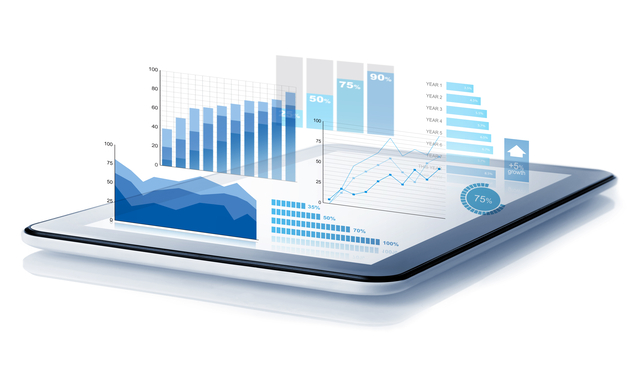CFOs Face Growing Pressure Amid Role Evolution
Evolving CFO Role Sees Added Pressure in Current Business Environment
Meet the Experts
Key Takeaways
⇨ CFOs and financial executives are under tremendous pressure to provide more strategic value.
⇨ The finance role is constantly evolving, making it difficult to provide accurate guidance and make sound decisions.
⇨ Organizations can leverage cloud-based analytics solutions, such as SAP Analytics Cloud, to improve operational efficiency and reduce the current burden on finance.
In today’s economy, CFOs are under tremendous pressure to do more with less. The pressure is only growing as executives must now contend with new compliance regulations and increased scrutiny from shareholders. Recent headlines underscore the mounting burden CFOs face as organizations consider all options to improve efficiency.
To better understand the sentiment of CFOs and senior finance executives in the current business environment, I spoke to Pras Chatterjee, Senior Director of Product Marketing for Planning & Analysis at SAP about the growing burden CFOs and finance executives face today. In his role at SAP, he is in constant dialogue with CFOs about their business challenges. Here’s what Mr. Chatterjee had to say about the pressure CFOs face today in the current business landscape. “There is a lot of pressure for CFOs to leverage the numbers and data to guide organizations towards the future. If you think about every earnings call that the CEO and the CFOs are on, they have to give guidance. That guidance is not random; it’s built on a forecast, and ultimately, the CFO has to provide that guidance and understand the impact of that guidance. Whatever guidance range the CFO provides, upside or downside, beating the guidance obviously can have a tremendous impact on shareholder value, while missing the guidance, even by a fraction, can signal to the market potentially distressing signs. So there’s clearly a lot of pressure on the CFO and the C-Suite.”
Adding to the pressure to do more, we see the role of the CFO has developed significantly over the past few years. From being solely responsible for financial reporting and compliance, CFOs are now expected to be strategic partners to the CEO and other members of the C-suite, as well as other departments and functions, providing insights that help drive business decisions. Mr. Chatterjee echoes this sentiment by saying, “The CFO role is much more strategic now. In the past, it was all about owning the numbers and reporting on the numbers. Now organizations see that and know understanding the numbers, interpreting numbers, and forecasting them is just as critical.”
Explore related questions
Greater Finance Insights Required to Improve Decision-Making
This means that CFOs require a deep understanding of the numbers and how those numbers affect other areas of the business. However, in today’s uncertain economic environment, CFOs and finance executives find it challenging to efficiently provide deep financial understanding across all areas of the organization. Unsurprisingly, our SAP S/4HANA Finance and Central Finance State of the Market benchmark report identified the demand for improved reporting, planning, and financial insights as the primary driver of finance and accounting strategic priorities.
But the challenges posed by economic disruptions in recent years have forced many organizations to re-evaluate strategic priorities and make tough decisions about allocating limited resources. The ability to allocate resources effectively highlights another area where CFOs may lack visibility. Data from our Cash Management and Cash Visibility benchmark report highlights cash forecasting as a significant pain point. Add to that budget uncertainty and workforce challenges, and finance teams are being asked to do more with fewer resources.
Understanding Data Key to Doing More with Less
Boosting the efficiency of limited resources means doing more with less. This starts with making better decisions and leading organizations are turning to data, remarks Mr. Chatterjee. “It is about understanding the data. If you think about the data that organizations have. The data is not just financial but operational, and it’s important to bring that data together to drive an enhanced decision-making process.”
As a result, one area that has seen particular interest from CFOs and finance executives is cloud-based analytics. Platforms such as SAP Analytics Cloud offer the ability to quickly and easily access data from multiple sources, eliminating the need for time-consuming manual processes. In addition, these platforms provide predictive analytics capabilities that can help organizations make better decisions about where to allocate resources. As businesses continue to look for ways to do more with less, it is likely that demand for cloud-based analytics will only increase. “The last two years offered a prevalence of black swan events, and this catastrophic health or pandemic-related events contributed to supply chain disruptions, inflationary pressures, and commodity fluctuations. The CFO has to account for all of this in their forecast. So I think there’s clearly a lot of pressure on the CFO to have the right solutions and right tools to help support them in making confident projections,” says Mr. Chatterjee.
CFOs and finance professionals are under immense pressure to deliver more with less. They’re being asked, for example, to do far-reaching strategic guidance in an uncertain environment while also providing financial insight that decision-makers can use across the organization. Many are turning to technology, specifically cloud-based analytics platforms, such as SAP Analytics Cloud, to help enable a comprehensive view of your organization’s financial health.
What Does This Mean for SAPinsiders?
Eliminate data silos and provide unified access for planning and analysis. Data silos can lead to inefficiencies and missed opportunities, as employees waste time manually transferring data between different systems. They can also prevent organizations from getting a holistic view of their data, as each silo contains only a small portion of the total information. Cloud-based analytics can help to eliminate data silos and provide unified access to data. By storing data in the cloud, organizations can ensure that all employees have access to the same information. Cloud-based analytics also makes sharing data between different departments and divisions easier.
Prioritize cloud-based platforms during finance transformations. As organizations seek to modernize their finance functions, many are looking to cloud-based, more scalable solutions than on-premises ones. This is important because finance transformations often require organizations to increase their data processing capacity. Cloud-based platforms can provide real-time insights. This is helpful because it allows CFOs to quickly identify and respond to changes in financial conditions.
Confirm CFO and CIO alignment to leverage data effectively to support an enhanced decision-making framework. As businesses become more digital, the role of the CFO is changing. They are no longer just responsible for managing financial risks; they must also be able to leverage data and analytics to make strategic decisions. However, for this to be possible, the CFO and CIO must be in alignment. The CIO needs to ensure that the company’s data is accessible by the finance team, while the CFO needs to ensure that the right analytics tools are in place.






